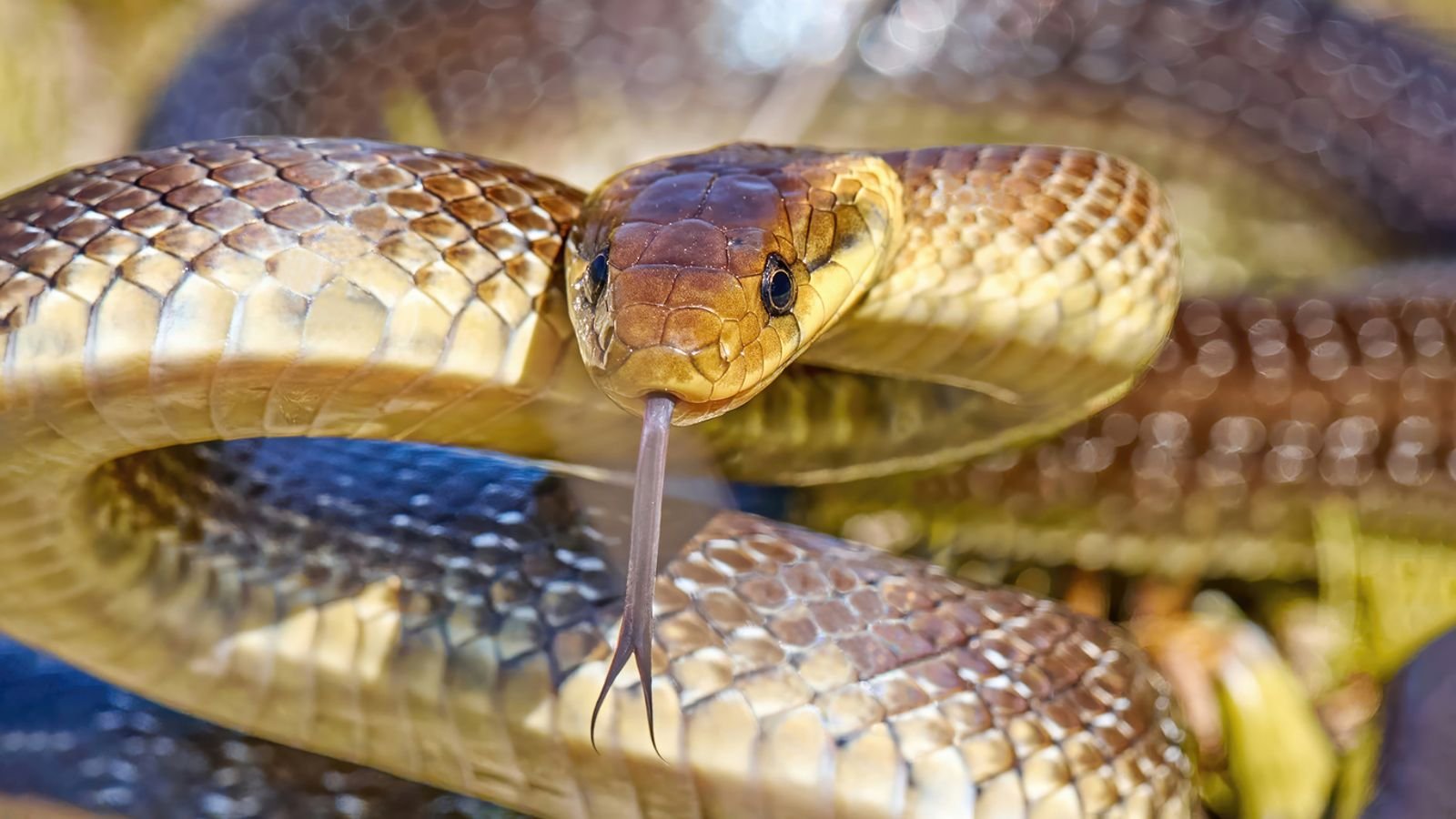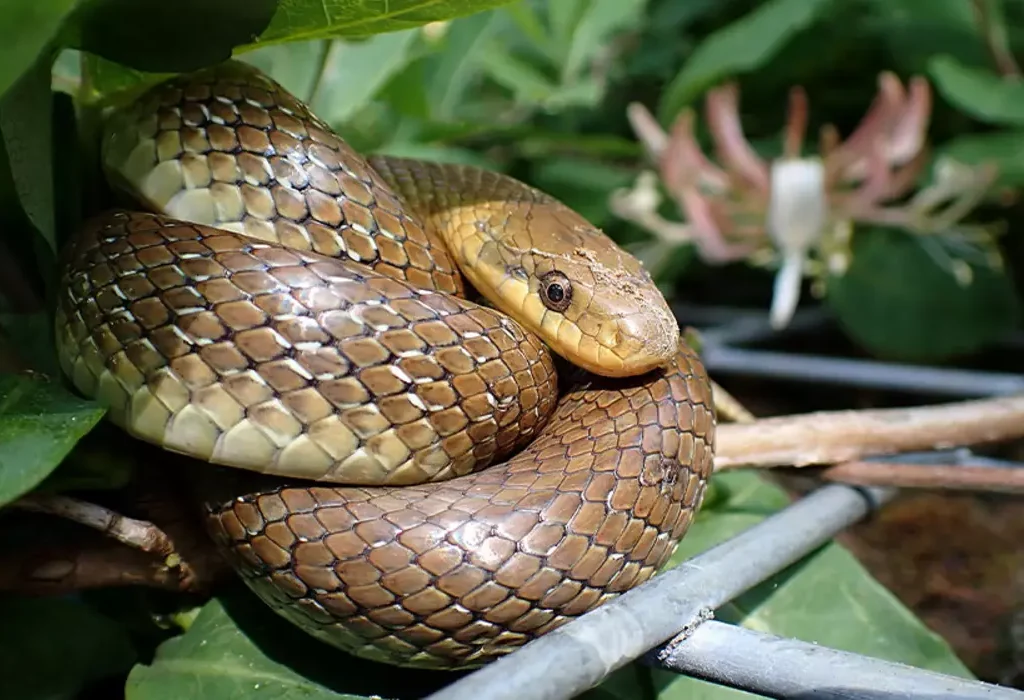Aesculapian snake in UK

The Aesculapian snake (Zamenis longissimus) is a non-venomous, slender snake native to Europe but now found in a few unique areas of the UK, specifically in parts of North Wales and London. It’s a fascinating species due to its rarity and the story of how it arrived and survived in the UK’s mild climate.
1. Appearance and Identification of Aesculapian Snake
- Coloration: Aesculapian snake have a dark olive to brown body color, often with a yellowish hue. Their scales are smooth, which gives them a glossy appearance.
- Size: These snakes can grow to impressive lengths of about 1.5 to 2 meters, with some reaching up to 2.2 meters, making them among the longest snakes in the UK.
- Head: They have small heads relative to their body size, blending smoothly into their slender, muscular bodies.

2. Habitat and Distribution in the UK of Aesculapian snake
- Locations: The Aesculapian snake populations in the UK are primarily in two distinct areas:
- London: Specifically around Regent’s Park, near the London Zoo. It is believed they were introduced accidentally in the mid-20th century.
- North Wales: Another isolated population can be found here, although it’s much rarer than the London group.
- Habitat Preference: They thrive in warm, sheltered areas with plenty of cover, such as woodlands, grasslands, and urban green spaces with crevices, tree roots, and rocks for hiding.
3. Diet and Behavior
- Diet: These snakes are primarily carnivorous, feeding on small mammals, birds, and occasionally other reptiles. Their diet makes them an effective natural pest control in areas they inhabit.
- Hunting Style: They are constrictors, wrapping around prey to subdue it before consuming it whole. The snake’s patience and stealth make it an adept hunter.
- Behavior: The Aesculapian snake is generally non-aggressive and reclusive, preferring to retreat rather than confront humans. It’s diurnal (active during the day) and is usually seen basking in the sun to regulate its body temperature.
4. Conservation Status and Concerns
- While this species is considered Least Concern on the global scale, its unique populations in the UK are of interest to conservationists. Due to their limited range and introduction status, these snakes are often closely monitored.
- Threats: Habitat loss and human disturbance pose risks to their limited populations in the UK. There’s also a concern that their non-native status might disrupt local ecosystems, although their populations are currently stable and monitored.
5. Interesting Facts
- Historical Symbolism: The snake’s name comes from Aesculapius, the ancient Greek god of medicine. The snake’s image, often seen wrapped around a staff, is an iconic symbol in medical fields worldwide.
- Adaptability: Despite not being native, the Aesculapian snake has adapted well to the UK’s climate, which shows its impressive resilience.








